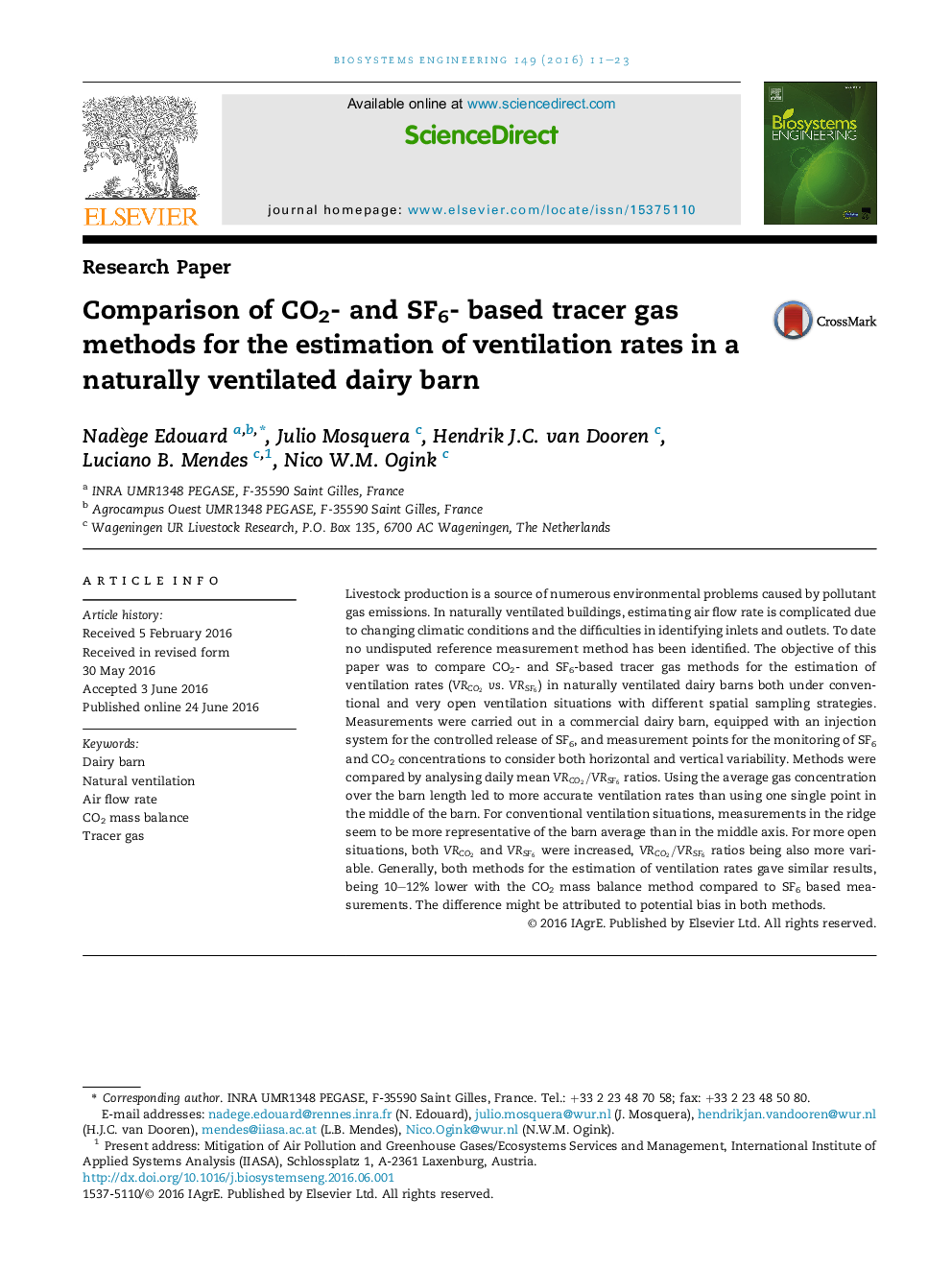| Article ID | Journal | Published Year | Pages | File Type |
|---|---|---|---|---|
| 1710819 | Biosystems Engineering | 2016 | 13 Pages |
•Tracer gas methods for the estimation of ventilation rates (VR) are explored.•An average concentration derived from multiple sample points is preferable.•For conventional ventilation cases, measurements in the ridge should be favoured.•The CO2 mass balance led to VR 10–12% lower compared to SF6 based measurements.•In very open situations, the SF6-based method can be subject to more variability.
Livestock production is a source of numerous environmental problems caused by pollutant gas emissions. In naturally ventilated buildings, estimating air flow rate is complicated due to changing climatic conditions and the difficulties in identifying inlets and outlets. To date no undisputed reference measurement method has been identified. The objective of this paper was to compare CO2- and SF6-based tracer gas methods for the estimation of ventilation rates (VRCO2VRCO2vs. VRSF6VRSF6) in naturally ventilated dairy barns both under conventional and very open ventilation situations with different spatial sampling strategies. Measurements were carried out in a commercial dairy barn, equipped with an injection system for the controlled release of SF6, and measurement points for the monitoring of SF6 and CO2 concentrations to consider both horizontal and vertical variability. Methods were compared by analysing daily mean VRCO2/VRSF6VRCO2/VRSF6 ratios. Using the average gas concentration over the barn length led to more accurate ventilation rates than using one single point in the middle of the barn. For conventional ventilation situations, measurements in the ridge seem to be more representative of the barn average than in the middle axis. For more open situations, both VRCO2VRCO2 and VRSF6VRSF6 were increased, VRCO2/VRSF6VRCO2/VRSF6 ratios being also more variable. Generally, both methods for the estimation of ventilation rates gave similar results, being 10–12% lower with the CO2 mass balance method compared to SF6 based measurements. The difference might be attributed to potential bias in both methods.
